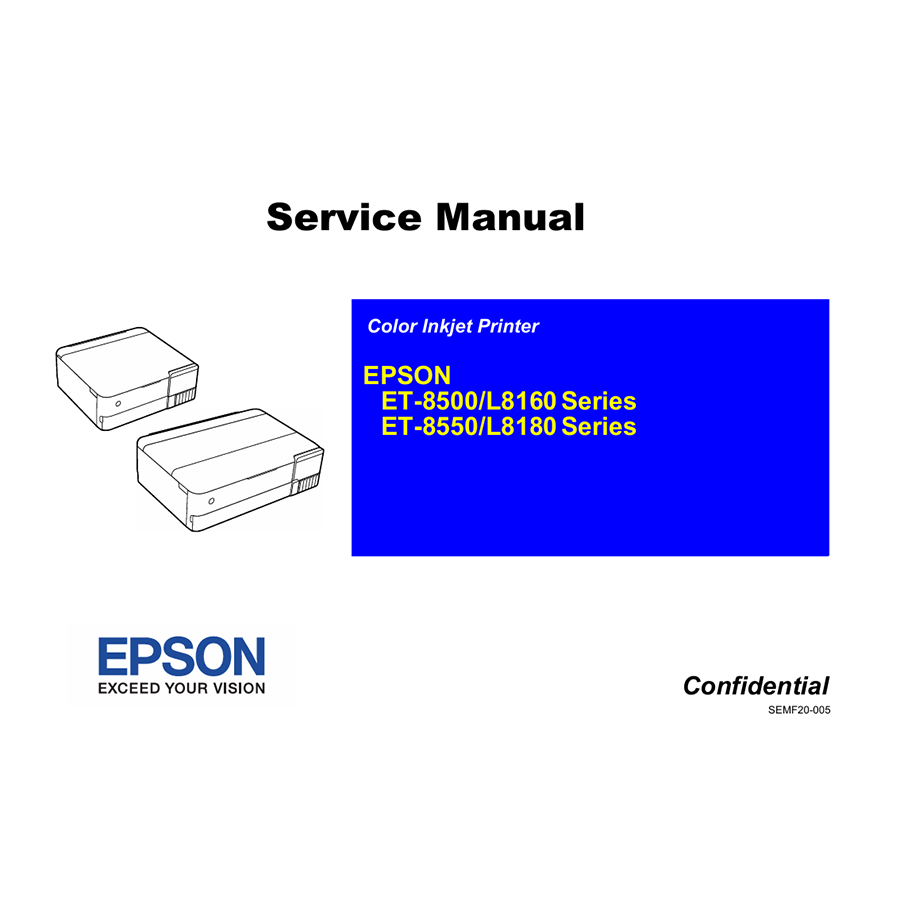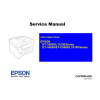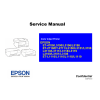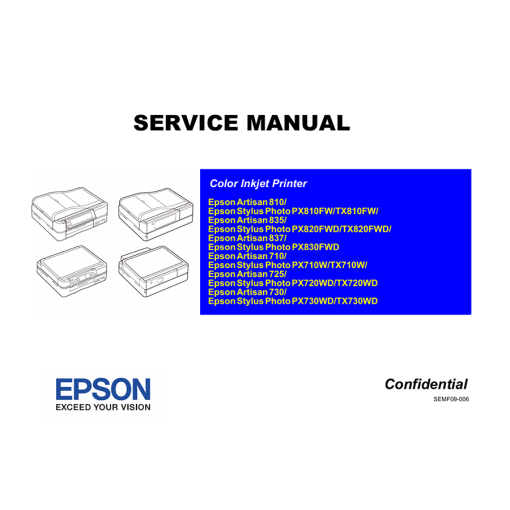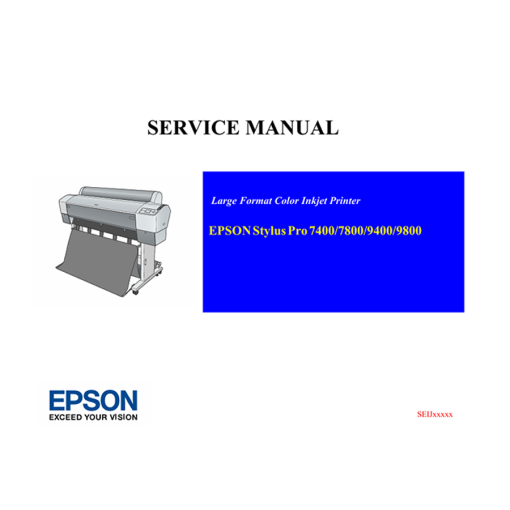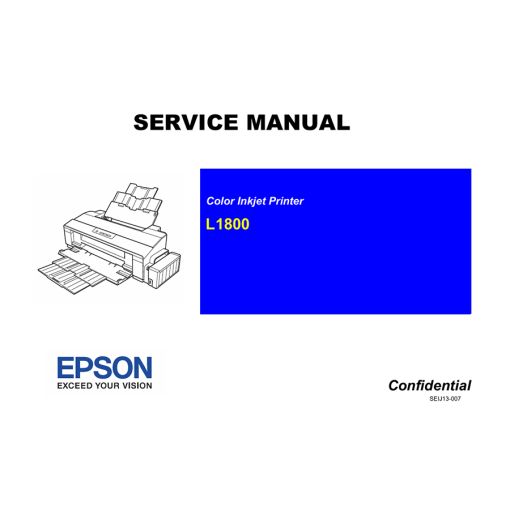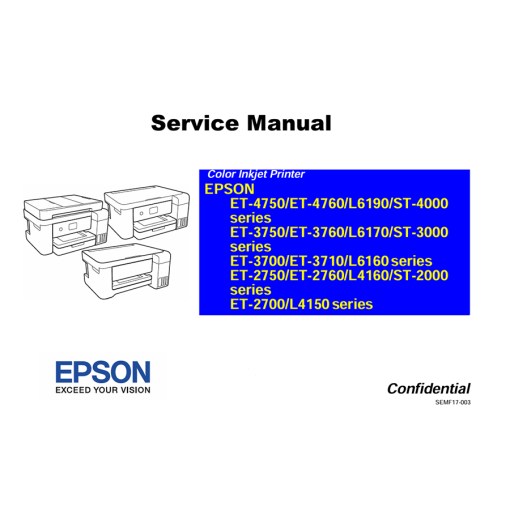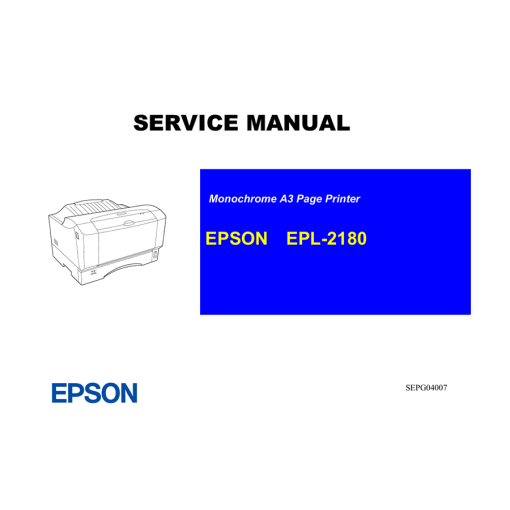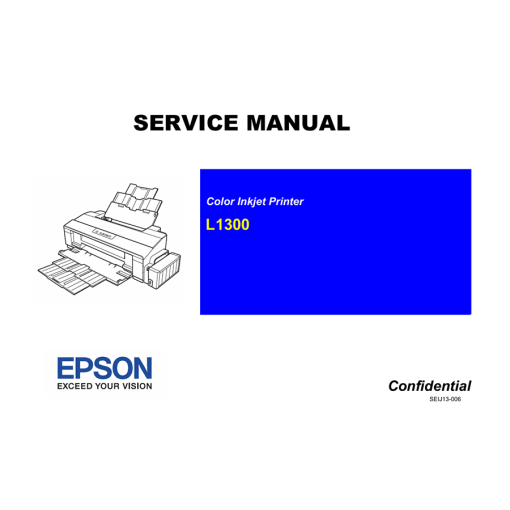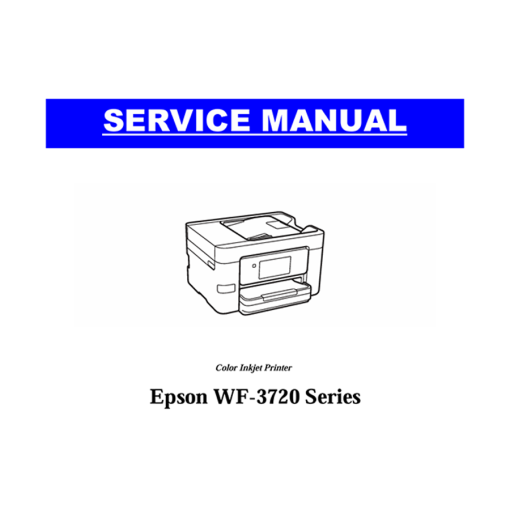Subtotal: 0 $
Epson Service Manual: The Master Guide for Your Epson EcoTank L8500, L8550, L8160, L8180 Series Photo Inkjet Printers
0 $
For photographers, graphic artists, and businesses demanding the highest quality photo and fine art prints coupled with the unprecedented economy of an ink tank system, the Epson EcoTank L8500, L8550, L8160, L8180 (and regional variants like L8168, L8188) are top-tier choices. These advanced 6-color (and sometimes 8-color, depending on specific model/region) A4/A3+ photo inkjet printers deliver breathtakingly vibrant colors, rich blacks, and incredible detail, making them indispensable tools for professional output. While engineered for precision and high-volume performance, even these robust and sophisticated machines can occasionally encounter issues that impact their functionality or critical print quality.
For photographers, graphic artists, and businesses demanding the highest quality photo and fine art prints coupled with the unprecedented economy of an ink tank system, the Epson EcoTank L8500, L8550, L8160, L8180 (and regional variants like L8168, L8188) are top-tier choices. These advanced 6-color (and sometimes 8-color, depending on specific model/region) A4/A3+ photo inkjet printers deliver breathtakingly vibrant colors, rich blacks, and incredible detail, making them indispensable tools for professional output. While engineered for precision and high-volume performance, even these robust and sophisticated machines can occasionally encounter issues that impact their functionality or critical print quality.
Instead of facing prohibitively expensive professional service, extended downtime, or the daunting prospect of replacing such a specialized and valuable printer, imagine possessing the precise technical knowledge to diagnose, meticulously calibrate, and resolve problems yourself. This is exactly what the Epson L8500, L8550, L8160, L8180 Series Inkjet Printer English Service Manual provides – your ultimate resource for expert repair, intricate calibration, and long-term optimal performance maintenance of these exceptional photo printers.
What is the Epson L8500, L8550, L8160, L8180 Series Service Manual?
The Epson L8500, L8550, L8160, L8180, L8168, L8188 Series Service Manual is Epson’s official, highly detailed technical document created specifically for this premium range of 6-color (and potentially 8-color) A4/A3+ EcoTank photo inkjet printers. Going far beyond the basic user manual, which covers setup and routine operations, this service manual is an absolute necessity for trained service technicians and ambitious DIY enthusiasts. It offers an in-depth exploration of the intricate mechanical, electrical, and firmware systems that power these printers, with a particular focus on their high-fidelity color reproduction, advanced media handling, and specialized components. Essentially, it serves as the definitive blueprint, guiding you through every step of understanding, troubleshooting, disassembling, calibrating, repairing, and accurately reassembling your Epson L8500, L8550, L8160, or L8180 series printer to maintain its factory-level optimal performance.
Key Repair Information and Contents You’ll Discover Inside
This comprehensive service manual is a goldmine of technical data, absolutely vital for anyone looking to perform in-depth maintenance or repairs on their Epson L8500, L8550, L8160, or L8180 series EcoTank photo printer. You can expect to find:
- Product Description and Specifications: A thorough overview of the various models within this series, outlining their features, detailed technical specifications (e.g., print speed, exceptionally high resolution for photo printing, A4/A3+ paper handling capabilities for various photo and fine art media, direct CD/DVD printing, and extensive connectivity options like Wi-Fi, Wi-Fi Direct, and Ethernet). It will meticulously detail their 6-color (or 8-color, like the ET-8550 equivalent) Piezoelectric print head technology, including the specific ink sets (e.g., CMYK + Photo Black + Grey, or additional colors like Red/Blue for expanded gamut).
- Operating Principles / Theory of Operation: Detailed explanations of how the printer’s various mechanisms function, with particular emphasis on their high-fidelity photo printing aspects. This includes:
- The precise 6-color (or 8-color) ink delivery system (how ink flows from the integrated tanks through the tubes to the print head, ensuring stable ink supply for all colors).
- The intricate operation of the print head and carriage movement, including precise droplet placement and firing sequences crucial for high-resolution photo prints with smooth gradients and fine detail.
- Advanced paper feeding mechanisms designed to handle a wide array of photo papers, thicker fine art media, card stock, and the CD/DVD tray mechanism.
- Crucial maintenance box (waste ink pad) management, including detailed information about its functionality and the process for replacement and counter reset, which is essential given the high volume of cleaning cycles in photo printers.
- Safety Information: This section is paramount. Working with complex electrical components, delicate moving parts, and a multi-color liquid ink system requires extreme caution. The manual provides explicit warnings and precautions, emphasizing how to safely disconnect power, handle sensitive electronic components (like the main board and the specialized multi-channel print head), and prevent ink spills or exposure. Always prioritize your safety by carefully reading and following these guidelines.
- Disassembly and Assembly Procedures: Step-by-step, clearly illustrated instructions guiding you through the safe and correct method for taking apart and putting back together every section of your printer. This is crucial for accessing internal components such as the print head, capping station, paper rollers, sensors, or logic boards for cleaning, inspection, or replacement. Special attention is typically given to disassembling components related to precise paper path, CD/DVD printing, and the intricate ink delivery system.
- Troubleshooting Guides: Extensive sections dedicated to diagnosing common and complex problems. These are often presented with logical flowcharts and tables, helping you pinpoint the root cause of an issue based on observed symptoms, detailed error codes, or print diagnostic patterns. This includes:
- Comprehensive Error Code List: A thorough enumeration of all diagnostic error codes that your printer might display on its LCD screen or via status lights, detailing their meaning and precise recommended steps for resolution. Issues like “Maintenance Box Near Full/End of Service Life” are thoroughly addressed, often requiring maintenance box replacement and a software-based counter reset.
- Advanced Photo Print Quality Issues: In-depth guidance on troubleshooting and resolving complex print defects specific to 6/8-color photo printing, such as color shifts, banding (especially subtle banding on smooth gradients), graininess, misaligned prints, faded or incorrect color rendition across the entire gamut, streaks, blurry prints, or missing lines across specific color channels. Solutions often involve specific nozzle checks, powerful cleaning cycles, advanced print head alignments (including bidirectional, vertical, and horizontal alignments for optimal photo quality), or identifying specific component failures (e.g., a single nozzle or damper).
- Paper Handling Problems: Solutions for various paper jams specific to diverse photo media and thicknesses (including instructions on how to safely clear them), misfeeds, or issues with specialty paper/CDs not picking up correctly from various input trays or the CD tray.
- Ink System Issues: Specific troubleshooting for ink flow problems, air bubbles in ink tubes (especially critical in multi-channel systems), cross-contamination, or difficulties with the integrated ink tank system and its multiple colors.
- Connectivity Issues: Guidance on troubleshooting Wi-Fi, Wi-Fi Direct, and Ethernet connection problems, critical for networked printing environments.
- Adjustment Procedures: Absolutely critical for maintaining photo print quality, this section provides precise instructions for calibrating various parts of the printer after repairs or component replacements. This includes advanced print head alignment procedures (e.g., micro-adjustments for pixel-perfect alignment), paper feed adjustments (e.g., for different media types and thicknesses), sensor calibrations, and potentially color calibration steps.
- Maintenance Procedures: Guidelines for comprehensive preventive maintenance, including routine cleaning instructions for the print head, capping station, pump assembly, rollers, paper path, and internal components. Crucially, it will also detail how to manage and reset the waste ink counter or replace the maintenance box/waste ink pads, which is a frequent and necessary maintenance requirement for these high-use photo EcoTank models.
- Circuit Diagrams and Wiring Diagrams: For those with electronics expertise, these detailed diagrams provide a visual representation of the printer’s complex electrical systems, component layouts on printed circuit boards (PCBs), and precise wiring connections, enabling advanced electrical diagnostics.
- Exploded Diagrams and Parts List: Visual breakdowns of the printer’s various assemblies, showing every component in an exploded view with its corresponding part number. This is incredibly useful for identifying and ordering the correct replacement parts from suppliers like diyinkjet.com.
Why This Epson Service Manual is an Indispensable Repair Resource
For dedicated owners and DIY enthusiasts working with the Epson EcoTank L8500, L8550, L8160, L8180 series photo printers, this service manual offers profound benefits:
- Significant Cost Savings: Empower yourself to perform many common maintenance tasks, critical calibrations, and even complex repairs in-house, drastically reducing expenses on external technician visits and costly service contracts. This is particularly valuable for specialized A4/A3+ photo printers, where professional service can be exceptionally expensive.
- Minimized Downtime: Quickly identify and resolve issues, getting your essential wide-format photo printer back into operation faster and minimizing disruption to your creative workflow or business printing needs in Yên Bái, Phú Thọ, Vietnam, or anywhere else.
- Extended Printer Lifespan: Proactive maintenance and accurate repairs, guided by official procedures, help maximize the operational life of your valuable EcoTank investment, making it a truly sustainable choice.
- Precision and Quality Preservation: For a high-end photo printer like these models, maintaining precise calibration is paramount to consistent, high-quality, and color-accurate output. The manual provides the exact steps to ensure your printer continues to produce professional-grade photo prints.
- Empowerment Through Knowledge: Gain a deep and practical understanding of your printer’s advanced EcoTank technology, multi-color ink system, and intricate internal mechanisms, leading to greater confidence in tackling future problems independently.
- Sustainable Practices: Repairing and extending the life of your equipment rather than discarding it contributes positively to reducing electronic waste and promotes a more environmentally responsible approach to technology.
Related products
Epson Service Manual
Epson Service Manual: The Essential Repair Companion for Your Epson EPL-N2180 Laser Printer
Epson Service Manual
Epson Service Manual: The Essential Guide for Your Epson EcoTank L1300 A3+ Inkjet Printer

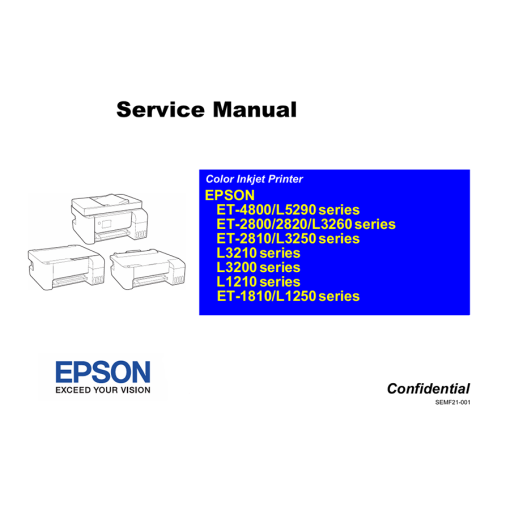 Epson Service Manual: The Ultimate Repair Guide for Your Epson EcoTank L-Series & ET-Series Printers (L3250, ET-4800, L5290, 28xx, 32xx, 12xx, 1810 Series)
Epson Service Manual: The Ultimate Repair Guide for Your Epson EcoTank L-Series & ET-Series Printers (L3250, ET-4800, L5290, 28xx, 32xx, 12xx, 1810 Series) 